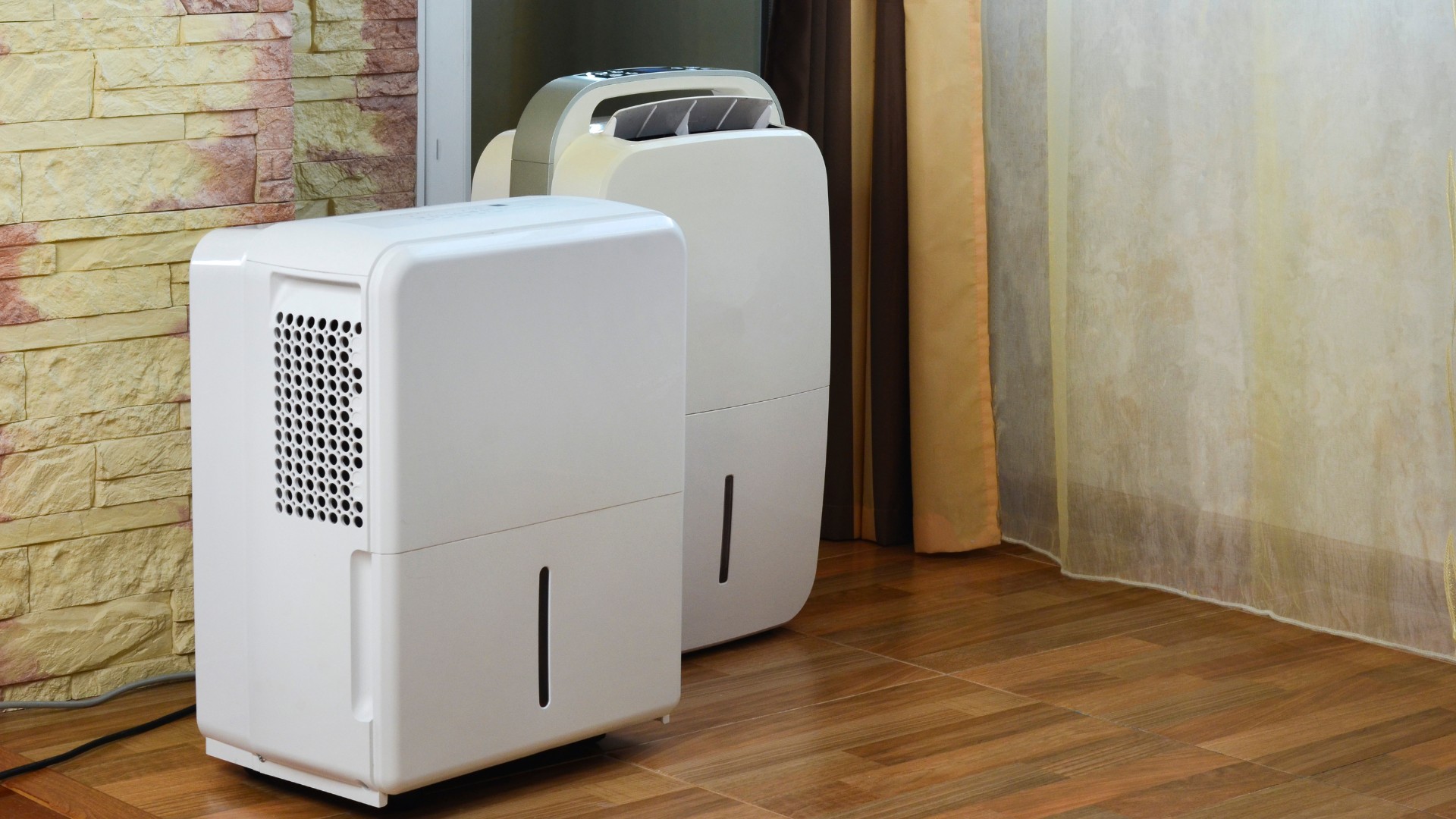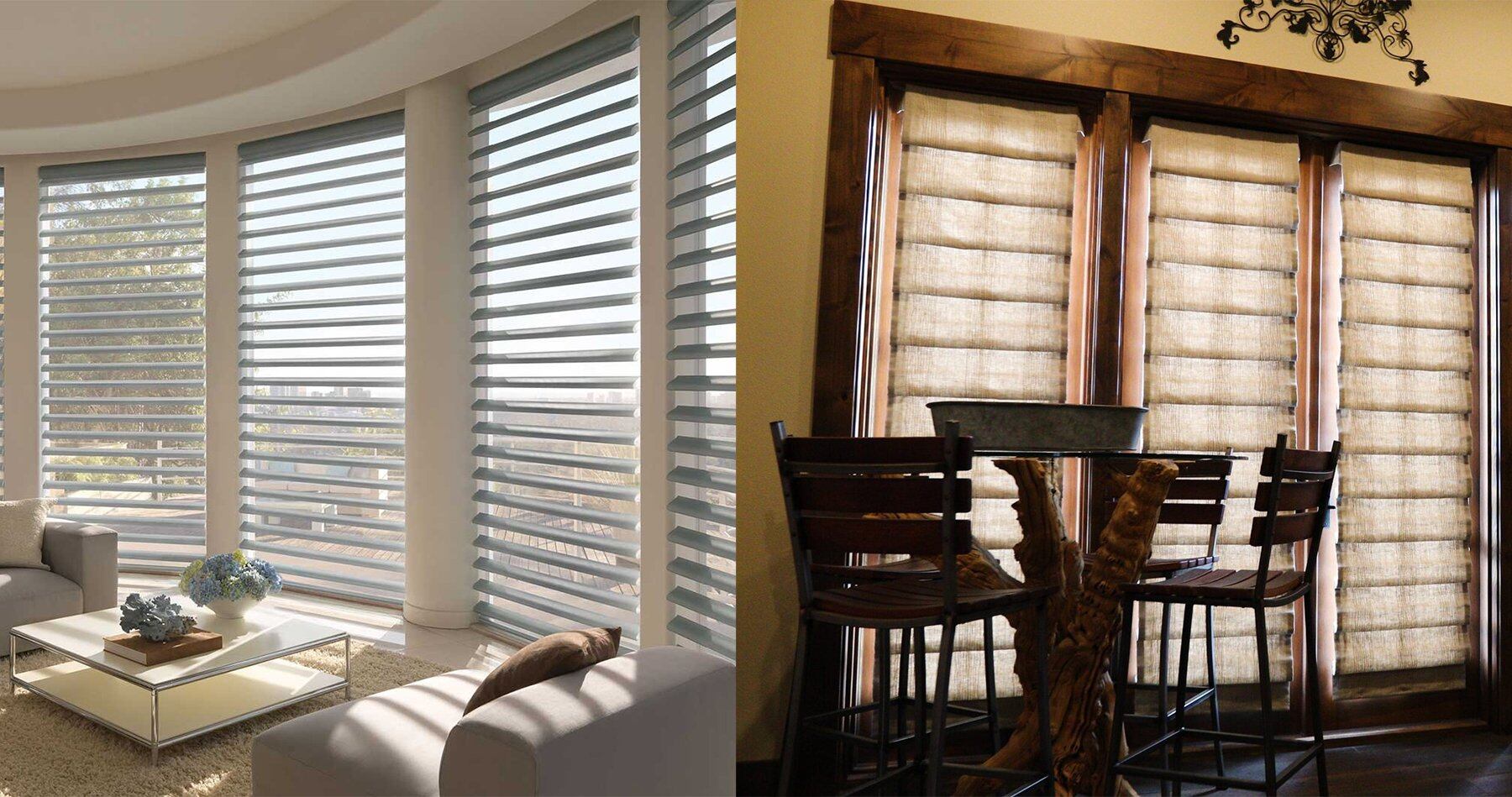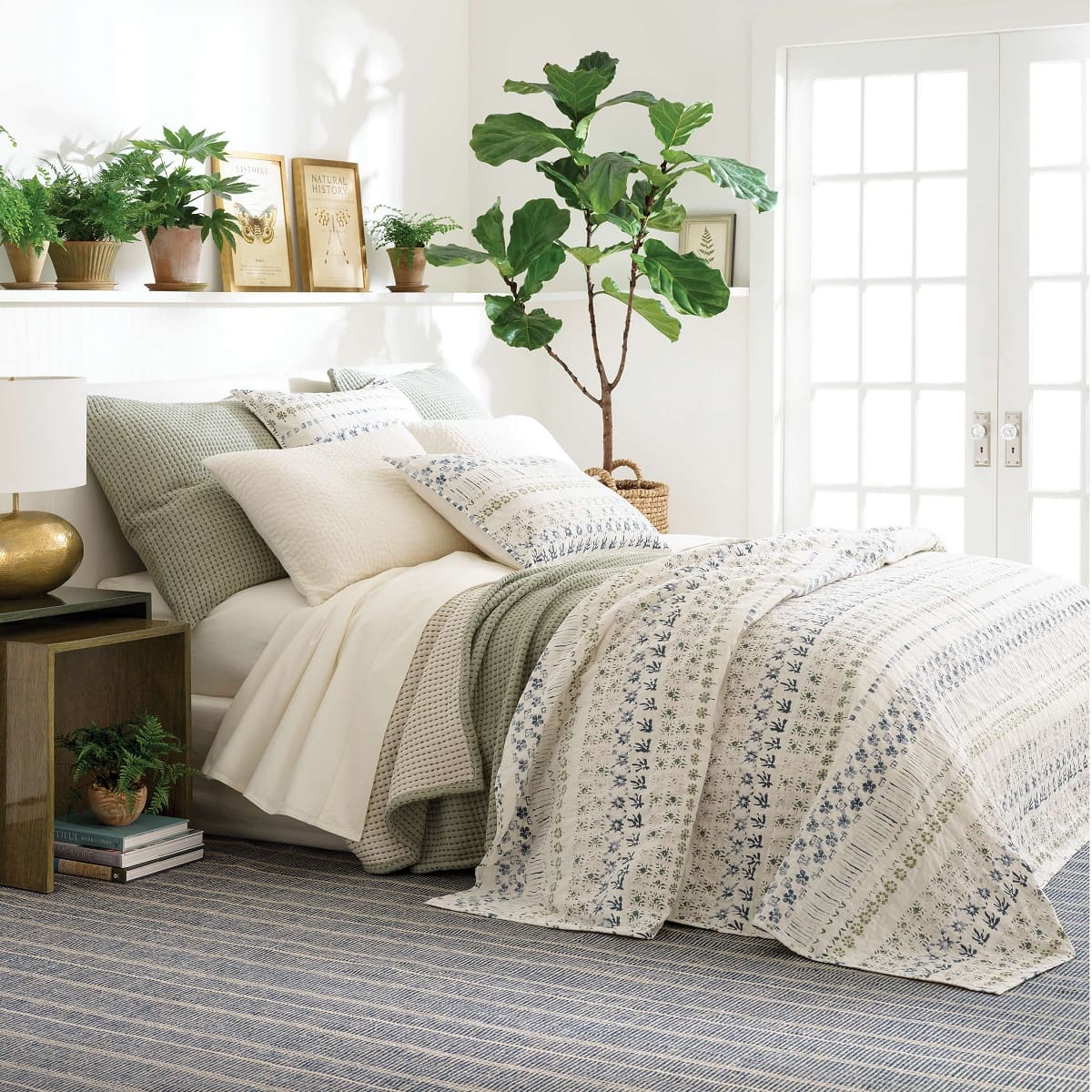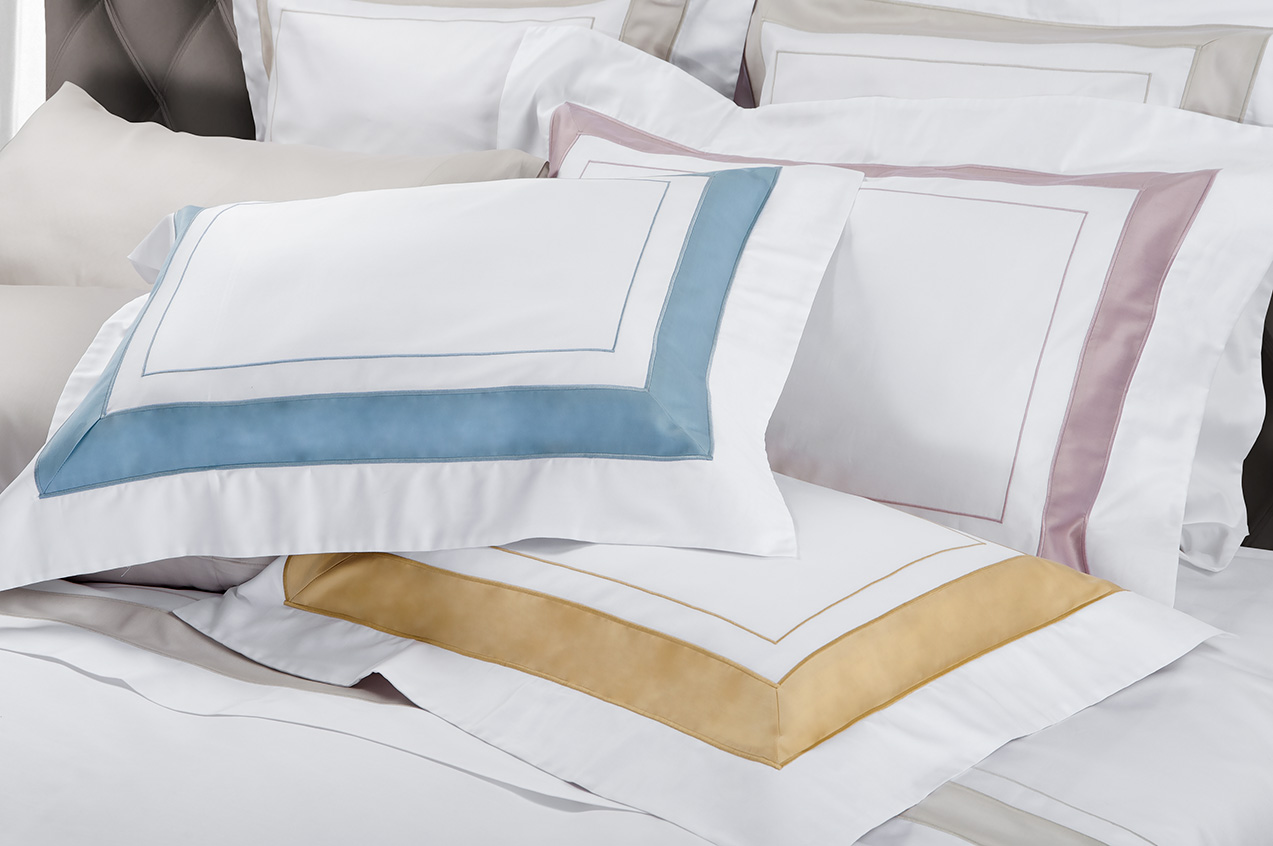Home>Articles>What Is The Difference Between A Dehumidifier And A Humidifier


Articles
What Is The Difference Between A Dehumidifier And A Humidifier
Modified: January 7, 2024
Discover the distinction between dehumidifiers and humidifiers with our informative articles. Find out which one suits your needs for a healthier indoor environment.
(Many of the links in this article redirect to a specific reviewed product. Your purchase of these products through affiliate links helps to generate commission for Storables.com, at no extra cost. Learn more)
Introduction
When it comes to creating a comfortable environment in your home, humidity plays a significant role. However, getting the right balance of humidity can be a challenge. Too much humidity can lead to mold growth and musty odors, while too little humidity can result in dry skin, irritated respiratory systems, and damage to wooden furniture and flooring.
To combat these issues and maintain a healthy living space, many homeowners turn to either a dehumidifier or a humidifier. These devices are designed to regulate the humidity levels in a room, but they serve different purposes. In this article, we will explore the key differences between dehumidifiers and humidifiers, how they work, and the benefits they provide.
By understanding the functions and benefits of each, you will be able to determine which device is best suited for your specific needs and create a more comfortable living space for yourself and your family.
Key Takeaways:
- Dehumidifiers reduce moisture to prevent mold and structural damage, while humidifiers add moisture for relief from dry skin and respiratory issues. Choose based on your specific needs and environmental conditions.
- Understanding the differences between dehumidifiers and humidifiers helps create a comfortable living space by regulating humidity levels and addressing specific health and environmental concerns.
Purpose of a Dehumidifier
A dehumidifier is a device designed to remove excess moisture from the air. It is typically used in spaces that tend to have high humidity levels, such as basements, bathrooms, and laundry rooms. The primary purpose of a dehumidifier is to reduce the moisture content in the air, which helps prevent the growth of mold, mildew, and dust mites.
Excess moisture in the air can lead to a variety of issues. In addition to mold and mildew growth, high humidity levels can cause condensation on windows, walls, and ceilings. This can result in peeling paint, water stains, and even structural damage over time. Furthermore, a damp environment can create an unpleasant musty odor and contribute to respiratory problems for individuals with allergies or asthma.
A dehumidifier works by pulling in the humid air using a fan and passing it over a cold coil. As the air cools, the moisture condenses on the coil and is collected in a reservoir or drained away. The drier air is then released back into the room. By controlling and reducing the humidity levels, a dehumidifier helps create a more comfortable and healthier living environment.
There are different types of dehumidifiers available, including portable units and whole-house units that can be connected to your HVAC system. The choice depends on the size of the space you want to dehumidify. Portable dehumidifiers are versatile and can be easily moved from room to room, while whole-house units provide a more comprehensive solution for larger areas.
Overall, the purpose of a dehumidifier is to maintain optimal humidity levels in a space, preventing the growth of mold and mildew, protecting the structural integrity of your home, and creating a more comfortable environment for you and your family.
Purpose of a Humidifier
A humidifier is a device that increases the moisture level in the air. It is commonly used in dry environments or during the winter months when indoor heating systems can lead to low humidity levels. The main purpose of a humidifier is to add moisture to the air, providing a range of benefits for both your health and your home.
Low humidity levels can cause a variety of discomforts and health issues. Dry air can cause dry skin, chapped lips, and irritated nasal passages. It can also result in dry, itchy eyes and respiratory problems like coughing and congestion. In addition to the physical discomfort, low humidity levels can damage wooden furniture, cause wallpaper to peel, and create static electricity.
A humidifier works by releasing water vapor into the air, increasing the moisture content. There are different types of humidifiers available, including evaporative, ultrasonic, and steam humidifiers. Each type operates differently, but they all aim to achieve the same goal of increasing humidity levels.
An evaporative humidifier uses a fan to blow air over a wet wick or filter, allowing the water to evaporate and add moisture to the air. Ultrasonic humidifiers use ultrasonic vibrations to break water particles into a fine mist that is then dispersed into the air. Steam humidifiers, as the name suggests, produce steam to add moisture to the air.
The benefits of using a humidifier are numerous. Increasing the humidity levels in your home can help alleviate dry skin, chapped lips, and respiratory issues. It can also reduce the occurrence of cold and flu symptoms, as viruses thrive in dry environments. Additionally, a humidifier can help preserve the condition of your furniture and prevent static shocks.
It is important to note that while a humidifier can provide many benefits, it is essential to maintain the humidity levels within an optimal range. Too much humidity can promote the growth of mold, which can lead to health issues and damage to your home. Therefore, it is crucial to monitor and control the humidity levels using a hygrometer, a device that measures the moisture content in the air.
In summary, the purpose of a humidifier is to increase the humidity levels in a dry environment, providing relief from dry skin, respiratory problems, and preserving the condition of your home and belongings.
Key Differences between Dehumidifiers and Humidifiers
Dehumidifiers and humidifiers may seem similar as they both affect the moisture levels in the air, but they serve different purposes and have distinct differences. Here are the key differences between dehumidifiers and humidifiers:
- Purpose: The primary purpose of a dehumidifier is to reduce moisture levels and humidity in the air, while a humidifier is used to increase moisture levels and humidity in the air.
- Effect on Health: A dehumidifier can help reduce health issues caused by excess moisture, such as mold growth and respiratory problems. On the other hand, a humidifier can alleviate health problems caused by dry air, like dry skin, chapped lips, and respiratory issues.
- Climate Considerations: Dehumidifiers are more commonly used in humid climates or areas with high humidity levels, where excess moisture is a concern. Humidifiers are typically used in dry climates or during winter months when indoor heating can lead to low humidity levels.
- Operation: Dehumidifiers work by drawing in humid air, extracting moisture from it, and releasing drier air back into the room. Humidifiers, on the other hand, add moisture to the air by releasing water vapor or steam.
- Types: There are different types of dehumidifiers available, including portable units and whole-house units that can be connected to the HVAC system. Humidifiers also come in various types, such as evaporative, ultrasonic, and steam humidifiers.
- Usage: Dehumidifiers are commonly used in areas prone to excess humidity, such as basements, bathrooms, and laundry rooms. Humidifiers are often used in living spaces, bedrooms, and offices to combat dry air.
It is crucial to assess your specific needs and the environmental conditions of your living space to determine whether a dehumidifier or a humidifier is more suitable. If you are experiencing issues such as mold growth, musty odors, or excess moisture, a dehumidifier would be the better choice. Conversely, if you are dealing with dry skin, respiratory problems, or static electricity, a humidifier would be beneficial.
By understanding the key differences between dehumidifiers and humidifiers, you can make an informed decision and select the appropriate device to optimize the humidity levels in your home and create a comfortable living environment.
How Dehumidifiers Work
Dehumidifiers are essential devices for reducing excess humidity in the air. They function by extracting moisture from the surrounding environment, helping to create a more comfortable and healthy living space. Here is an overview of how dehumidifiers work:
1. Air Circulation: Dehumidifiers use a fan to draw in humid air from the room. The air is then circulated within the dehumidifier’s system.
2. Condensation: The humid air passes over a cooled coil or a cold surface within the dehumidifier. As the air cools down, the moisture in the air condenses into liquid form, turning into water droplets.
3. Collection: The water droplets that have condensed are collected in a reservoir inside the dehumidifier. Some models may have a built-in tank or a removable water container that needs to be emptied periodically. Other models may have a continuous drainage system that allows the water to be directly drained away.
4. Air Reheating: After the moisture has been extracted, the air is reheated by the dehumidifier before being released back into the room. This ensures that the air maintains a comfortable temperature.
5. Humidity Control: Dehumidifiers are equipped with a humidistat, which is a device that measures the humidity levels in the air. Based on the set humidity level, the dehumidifier automatically switches on or off to maintain the desired humidity balance.
There are different types of dehumidifiers available, including refrigerative dehumidifiers and desiccant dehumidifiers. Refrigerative dehumidifiers, also known as compressor dehumidifiers, use a refrigeration cycle to cool the air and extract moisture. Desiccant dehumidifiers, on the other hand, use a desiccant material such as silica gel to absorb moisture from the air.
It’s important to note that dehumidifiers are most effective in enclosed spaces with limited airflow. They are commonly used in basements, crawl spaces, bathrooms, and laundry rooms, where high humidity levels can lead to mold growth, musty odors, and damage to materials.
Regular maintenance of dehumidifiers is essential to ensure optimal performance. This includes cleaning or replacing filters, emptying or draining the water reservoir, and keeping the unit free from dust and debris. By properly maintaining your dehumidifier, you can prolong its lifespan and enjoy the benefits of a comfortable and healthy living environment.
A dehumidifier removes moisture from the air, while a humidifier adds moisture. Use a dehumidifier in damp areas to prevent mold and a humidifier in dry areas to improve air quality.
How Humidifiers Work
Humidifiers are devices that increase the moisture levels in the air to combat dryness and create a more comfortable indoor environment. They work by adding moisture to the air, helping to alleviate dry skin, respiratory problems, and other issues caused by low humidity. Here’s an overview of how humidifiers work:
1. Water Reservoir: Humidifiers have a water reservoir that holds the water used to generate moisture. The size of the reservoir can vary depending on the model, and it may need to be refilled periodically.
2. Evaporation or Atomization: There are different types of humidifiers, including evaporative, ultrasonic, and steam humidifiers. Evaporative humidifiers use a wick or filter that absorbs water from the reservoir. A fan blows air over the wet wick, causing the water to evaporate and release moisture into the room. Ultrasonic humidifiers use ultrasonic vibrations to create a fine mist by breaking water particles into tiny droplets. Steam humidifiers heat water to produce steam, which is then released into the air.
3. Moisture Distribution: Once the water is converted into moisture, it is dispersed into the air through the humidifier’s output. The moisture mixes with the surrounding air, increasing the humidity level in the room.
4. Humidity Control: Some humidifiers have built-in humidistats, which measure the humidity levels in the room. These humidifiers can automatically adjust the moisture output to maintain a desired humidity level. Other models may have manual controls that allow you to adjust the humidity level manually.
5. Cleaning and Maintenance: Regular cleaning of humidifiers is crucial to prevent the buildup of bacteria, mold, and mineral deposits. Depending on the type of humidifier, maintenance may involve cleaning or replacing filters, descaling the unit to remove mineral deposits, and ensuring that the water reservoir is kept clean and free from contamination.
Humidifiers are commonly used in dry climates, especially during the winter months when indoor heating systems can reduce humidity levels. By increasing the moisture content in the air, humidifiers help alleviate dry skin, chapped lips, respiratory problems, and static electricity. They can also benefit individuals with allergies or asthma, as humid air can help soothe irritated nasal passages and airways.
It is important to note that excessive humidity levels can lead to the growth of mold and bacteria, so it is essential to maintain a balanced humidity level. Using a hygrometer, which measures humidity levels, can help ensure that the humidity in your space remains within a healthy range.
By understanding how humidifiers work and properly maintaining them, you can enjoy the benefits of a comfortable and well-humidified living environment.
Benefits of Using a Dehumidifier
A dehumidifier offers several benefits for your health, comfort, and the overall well-being of your home. Here are some key advantages of using a dehumidifier:
- Prevents Mold and Mildew: Excess moisture in the air can lead to the growth of mold and mildew. These unsightly and potentially harmful substances thrive in damp environments and can trigger allergies and respiratory problems. By reducing humidity levels, a dehumidifier helps prevent the growth of mold and mildew, creating a healthier living environment.
- Reduces Allergens: Dust mites and other allergens thrive in humid environments. By keeping the humidity levels under control, a dehumidifier can help reduce these allergens, providing relief for individuals with allergies or asthma.
- Eliminates Musty Odors: Excessive moisture can cause unpleasant musty odors in your home. A dehumidifier helps eliminate these odors by removing the excess moisture from the air, leaving your living space smelling fresh and clean.
- Protects Your Home: High humidity levels can cause damage to your home. Moisture can seep into walls, ceilings, and floors, leading to structural problems and even compromising the integrity of your home. A dehumidifier helps mitigate these risks by maintaining optimal humidity levels and preventing moisture-related damage.
- Improves Air Quality: Excessive moisture in the air can contribute to poor indoor air quality. It can lead to the growth of harmful bacteria, increase the presence of allergens, and create a stuffy and uncomfortable environment. By removing excess moisture from the air, a dehumidifier helps improve the overall air quality in your home.
- Enhances Comfort: High humidity levels can make a room feel muggy and uncomfortable. By reducing humidity, a dehumidifier helps create a more comfortable living space, especially during hot and humid summer months.
- Aids in Drying Clothes: If you have a laundry room or basement, using a dehumidifier can help speed up the drying process for clothes. By removing excess moisture from the air, a dehumidifier can help clothes dry more quickly and efficiently.
- Energy Efficiency: When excessive moisture is present, air conditioners and HVAC systems need to work harder to cool the air, leading to higher energy consumption. By reducing humidity levels, a dehumidifier can help improve the efficiency of cooling systems, thereby potentially reducing energy costs.
Overall, using a dehumidifier offers numerous benefits, including the prevention of mold, reduction of allergens, elimination of musty odors, protection of your home, improved air quality, enhanced comfort, faster drying of clothes, and potential energy savings. Choose a dehumidifier suitable for the size of the space you wish to dehumidify and enjoy the advantages of a dry and healthy living environment.
Benefits of Using a Humidifier
A humidifier can have a significant impact on your health, comfort, and overall well-being by adding moisture to the air in your home. Here are some of the key benefits of using a humidifier:
- Relieves Dry Skin and Lips: Dry air can cause dry, itchy skin and chapped lips. A humidifier adds moisture to the air, helping to alleviate these skin issues and keeping your skin hydrated and healthy.
- Alleviates Respiratory Issues: Dry air can cause and exacerbate respiratory problems such as allergies, asthma, and sinus congestion. A humidifier adds moisture to the air, making it easier to breathe and relieving symptoms like coughing, wheezing, and congestion.
- Prevents Dry Eyes and Throat: Dry air can lead to dry and irritated eyes and a scratchy throat. A humidifier helps to keep these mucous membranes moist, reducing discomfort and promoting better eye and throat health.
- Reduces Snoring: Dry air can contribute to snoring by causing congestion and irritation in the nasal passages and throat. By increasing the humidity in the air, a humidifier can help reduce snoring and promote better sleep for you and your partner.
- Protects Wooden Furniture and Flooring: Low humidity levels can cause wood to dry out and crack. By maintaining optimal humidity levels, a humidifier helps preserve the condition of your wooden furniture, flooring, and musical instruments.
- Prevents Static Electricity: Dry air tends to generate static electricity, leading to annoying static shocks. A humidifier helps to reduce static electricity in the air, making your environment more comfortable and reducing those pesky shocks.
- Improves Sleep Quality: Dry air can lead to disrupted sleep due to discomfort and congestion. A humidifier creates a more comfortable sleeping environment by adding moisture to the air, promoting better sleep quality and providing a more-restful night’s sleep.
- Preserves Houseplants: Indoor plants thrive in environments with higher humidity levels. By using a humidifier, you can provide your houseplants with the moisture they need to stay healthy and flourish.
- Enhances Overall Comfort: Increasing the humidity in your living space can create a more comfortable environment. It helps to reduce dryness and promotes a cozy atmosphere, especially during the cold winter months or in arid climates.
It’s important to ensure that the humidity levels don’t become excessive, as that can lead to issues like mold growth. Using a hygrometer can help monitor and maintain optimal humidity levels in your home.
By using a humidifier, you can experience numerous benefits like relieving dry skin and lips, alleviating respiratory issues, preventing dry eyes and throat, reducing snoring, protecting furniture and flooring, preventing static electricity, improving sleep quality, preserving houseplants, and enhancing overall comfort in your living environment. Choose a humidifier that suits the size and needs of your space, and enjoy the benefits of a well-humidified home.
Choosing between a Dehumidifier and a Humidifier
Deciding between a dehumidifier and a humidifier depends on the specific needs and conditions of your living space. Here are some factors to consider when choosing between the two:
- Current Humidity Levels: Examine the humidity levels in your home. If you live in a humid climate or have areas prone to excess moisture, a dehumidifier can be beneficial. On the other hand, if you are experiencing dry air or low humidity levels, a humidifier can help add moisture to the air.
- Health Concerns: Consider any health issues you or your family members may have. If anyone suffers from allergies or respiratory problems, a dehumidifier can help reduce allergens and mold growth. If dry skin, chapped lips, or respiratory discomfort are concerns, a humidifier can provide relief.
- Seasonal Considerations: Evaluate the seasonal changes and weather patterns in your area. If you live in a region with dry winters due to indoor heating systems, a humidifier can help combat the dry air. If you experience high humidity levels during certain seasons, a dehumidifier can help control excess moisture.
- Room Size: Determine the size of the space you want to treat. Portable dehumidifiers and humidifiers are suitable for smaller rooms, while whole-house units can efficiently regulate humidity levels in larger areas or an entire home.
- Maintenance: Consider the maintenance requirements. Dehumidifiers typically require regular cleaning, filter changes, and emptying or draining of the water reservoir. Humidifiers also require cleaning and occasional filter replacements. Evaluate the level of maintenance you’re willing to perform.
- Budget: Assess your budget for purchasing and operating the device. Dehumidifiers and humidifiers vary in price and energy consumption. Consider the long-term costs of operating the device, including electricity and maintenance expenses.
Ultimately, choosing between a dehumidifier and a humidifier depends on your specific needs, preferences, and the environmental conditions of your home. In some cases, you may even benefit from using both devices in different areas of your home to achieve the ideal balance of humidity levels.
Consulting with a professional or conducting research on various models and brands can help you make an informed decision. Understanding the benefits and considerations of each device will assist you in choosing the best option to improve the comfort, health, and overall well-being of your living environment.
Conclusion
When it comes to maintaining a comfortable and healthy living environment, the humidity levels play a crucial role. Dehumidifiers and humidifiers are valuable devices that offer distinct benefits to help regulate the moisture content in the air. By understanding their purposes and functions, you can make an informed decision on which device is best suited for your specific needs.
A dehumidifier is used to reduce excess moisture and humidity in the air, preventing issues such as mold growth, musty odors, and structural damage. It is particularly useful in humid climates or areas prone to high humidity levels. On the other hand, a humidifier is designed to increase moisture levels in dry environments, providing relief for dry skin, chapped lips, respiratory discomfort, and other issues caused by low humidity.
Dehumidifiers and humidifiers operate differently, with dehumidifiers extracting moisture from the air and humidifiers adding moisture. They come in various types and sizes, allowing you to choose the appropriate device for the specific space you want to treat.
Both dehumidifiers and humidifiers offer multiple benefits. Dehumidifiers help prevent mold growth, reduce allergens, eliminate musty odors, protect your home, improve air quality, and enhance comfort. Humidifiers alleviate dry skin and lips, respiratory issues, dry eyes and throat, snoring, protect wooden furniture and flooring, reduce static electricity, improve sleep quality, and enhance overall comfort.
When choosing between a dehumidifier and a humidifier, consider factors such as current humidity levels, health concerns, seasonal considerations, room size, maintenance requirements, and budget. By assessing these factors, you can select the device that best meets your specific needs and promotes a comfortable and healthy living environment.
It’s important to note that controlling humidity levels is essential for both devices. Monitoring the humidity with a hygrometer can help ensure that the levels remain within the optimal range to avoid issues such as mold growth or excessively dry air.
Ultimately, whether you require a dehumidifier or a humidifier, incorporating these devices into your home can significantly improve your comfort, health, and overall well-being. Create a space that is balanced in humidity levels, and enjoy the benefits of an environment that suits your needs and enhances your quality of life.
Frequently Asked Questions about What Is The Difference Between A Dehumidifier And A Humidifier
Was this page helpful?
At Storables.com, we guarantee accurate and reliable information. Our content, validated by Expert Board Contributors, is crafted following stringent Editorial Policies. We're committed to providing you with well-researched, expert-backed insights for all your informational needs.














0 thoughts on “What Is The Difference Between A Dehumidifier And A Humidifier”